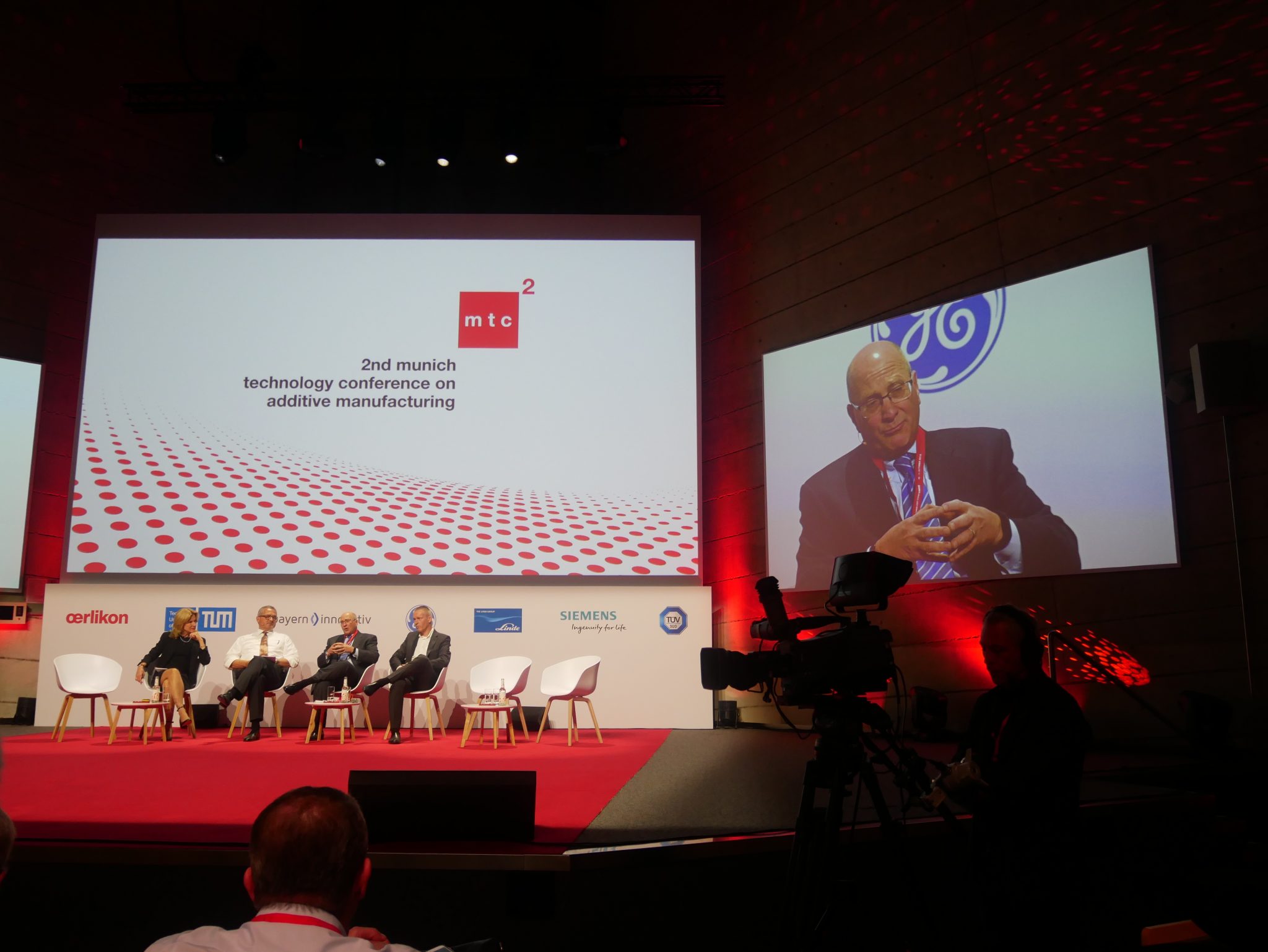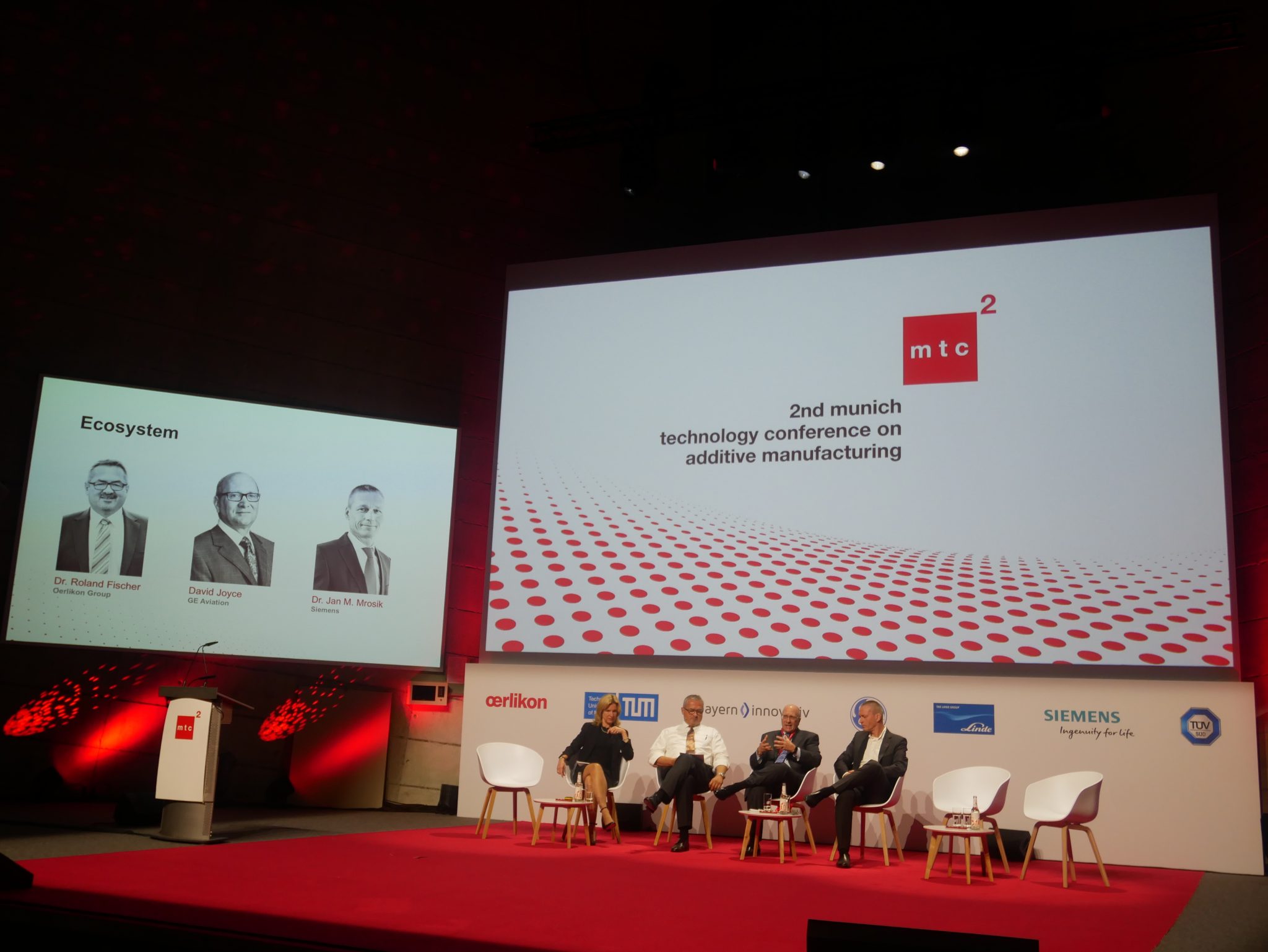Oerlikon Group’s Second Munich Technology Conference (MTC2) took place this week with industry professionals from all over the world converging to discuss the industrialization of additive manufacturing.
3D Printing Industry returned for the second year to join over 1000 attendees spanning across the two-day conference, a significant increase compared to the estimated 600 attendees of MTC1 last year.
Addressing the current hurdles and potential solutions within the industry, experts from the MTC2 shared a plethora of ideas for a successful additive manufacturing ecosystem. Dr Michael Süss, Chairman of the board of directors, Oerlikon Group, explained:
“This huge challenge of additive with its immense opportunities can only be handled by our community, by an ecosystem, and not by a single party.”
The factors affecting additive manufacturing industrialization
Throughout my time at the MTC2, I recognized recurring factors of concern for a prosperous additive manufacturing industry. This included collaboration and digitization, material development, and advancements in the academic curriculum.
Such themes remained equally emphasized throughout the conference, particularly on the first day of MTC2 during the industrial talk on additive manufacturing and the role of academics, businesses, and government.
“It’s not easy to adopt additive, that industrialization is going to take time,” said David Joyce, a Vice Chair of GE and President and CEO for GE Aviation.
“The materials systems are complicated, the machine durability needs to be better, so I think that the adoption is about all of us starting on this journey of showing positive innovation within the industry. This will get a broader user base to make the technology become more mainstream as an industrial solution.”

Collaboration and digitization
Jan Mrosik, CEO of the Digital Factory Division at Siemens, advocated for increased collaboration from businesses within the industry. “With additive manufacturing, we have the opportunity to generate entirely new shapes, better designs, and cut down logistics. These advantages have to talk to people, therefore we have to make additive manufacturing simple.”
“The ideal would, of course, be a worldwide platform where knowledge and knowhow around additive manufacturing can be brought together in one kind of gigantic ecosystem. This digital umph lead to the creation of our additive manufacturing network.”
“A place where everyone can hook into a cloud-based system, be it machine builders, material providers, designers, the ones who would like products printed, those that print products for others, software providers; all of these people can contribute and plug into such a platform. This forms a knowledge-sharing and transnational perspective to promote the practical usage of additive manufacturing.”
Advancing tertiary curriculums
Highlighting the importance of academia as well as collaboration, Joyce explained:
“Partnerships today will be totally different next year. In regulatory, we have a very very aggressive dialogue with the FAA and we understand how to certify additive parts. One of the other partnerships that is important are universities. We’re looking for young graduates who understand how to use additive [manufacturing] which requires a different skill set than they have today.”
“There will be a shift in curriculum for the traditional engineer if we are to be successful. Design in the next decade is going to be rapidly different than what we’re teaching today. Designs will become so organic in the future [and] there’s no reason for it not to be because you don’t pay for complexity in additive manufacturing the way you pay for complexity in traditional manufacturing.”
“Curriculums that teach design have got to change, they have to create a toolset so designers think differently of the restrictions of what can be made today. This means the manufacturing classes, the material classes, and the design classes have to change.”
Mrosik added, “[Additive manufacturing] starts with academia to really train people to be able to use its advantages. And, materials science needs to support these new designs.”

Considering the factors discussed to create a successful additive manufacturing ecosystem, Dr. Roland Fischer, CEO of Oerlikon Group, stated, “The most crucial element for me is that we must maintain a focus. We are all excited, but there are plenty of ideas and processes that have yet to be properly understood. Let us understand how to orchestrate this new technology other we will be in danger of missing something.”
Although the factors affecting the industrialization of additive manufacturing differ in importance from the industry experts, it is evident from my time at the MTC2 that the goal of 3D printing reaching a broader market remains the same.
Subscribe to the 3D Printing Industry newsletter, like us Facebook and follow us on Twitter to stay up to date with all the latest additive manufacturing news and insight.
Looking for a change of pace or seeking new talent? Search and post 3D Printing Jobs for opportunities and new talent across engineering, marketing, sales and more.
Featured image shows the exterior of the Second Munich Technology Conference. Photo by Tia Vialva.

